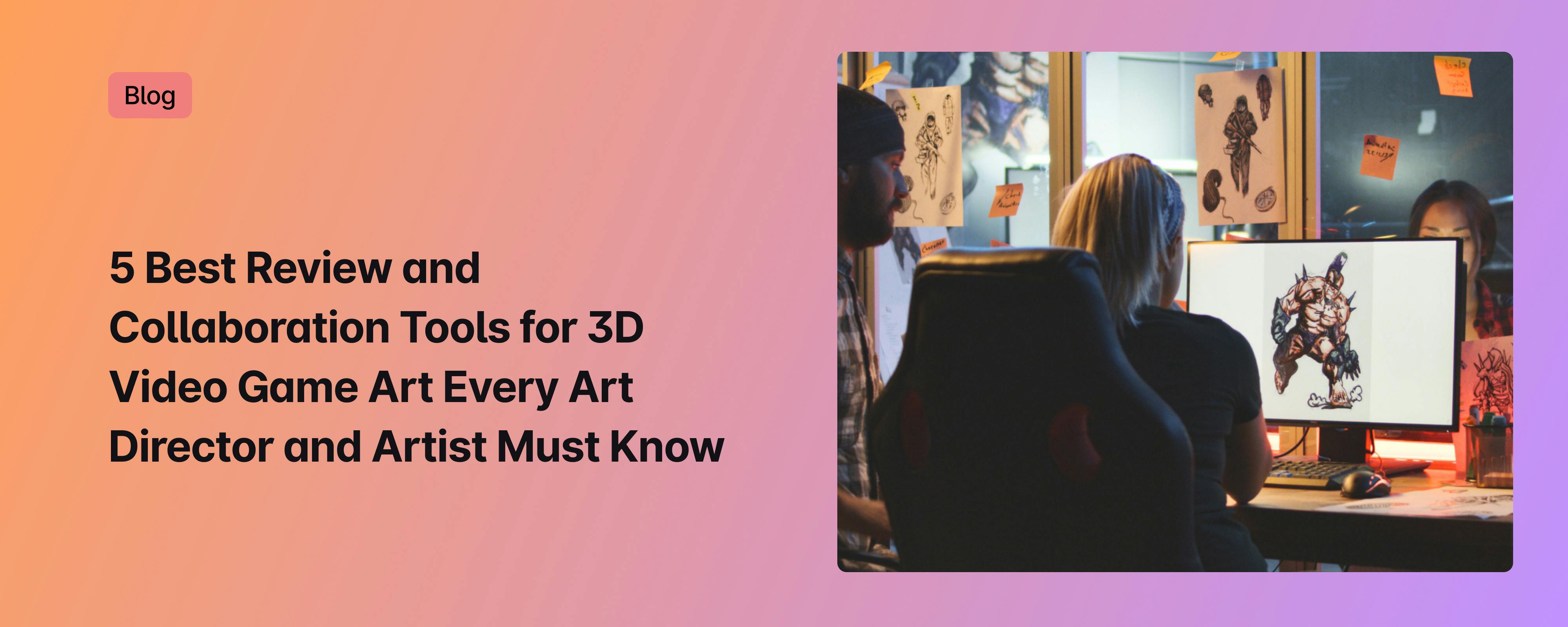Exploring the Advantages & Pitfalls of Perforce for Video Game Artists
Mudstack offers an artist-first solution for game studios and digital artists


Perforce Helix Core is a widely used version control software in AAA game development, offering simplicity, scalability, and integration with existing workflows. It provides artist-friendly features such as intuitive command-line functions, practical GUI, storage, and security. However, it can be slow, visually unappealing, and expensive for small teams, with mistakes having significant consequences. Mudstack is a custom digital asset management tool designed for artists, offering file-level version control, a visual user interface, and non-destructive project-level changes, giving digital art teams a competitive edge.
What is Perforce Helix Core?
Perforce Helix Core is the industry standard version control software used by AAA video game studios worldwide. Game studios use Perforce Helix Core as a centralized storage space for their digital assets, enabling their teams to access and distribute files with relative ease to their local workspace. This makes outsourcing parts of a project possible, allowing studios to expand and collaborate with artists and developers from many different backgrounds.
Why do AAA game studios use Perforce for version control?
The size and distribution of teams working on AAA games can be astounding. With so many cooks in the kitchen, having a single source of truth for storing and organizing digital assets and code is essential to the success of these large-scale projects.
Simplicity
While alternatives like Git exist, Perforce does an excellent job of taking into consideration that not everybody working on these projects comes from an engineering or computer science background. Perforce offers a solution that is friendly for team members who are less comfortable working in an environment that was really only designed with programmers in mind.
Scalability
AAA game studios are often expanding, bringing in new talent and partnerships as the scope and scale of AAA games grow. Perforce was designed with large teams in mind with no hard limits on repository sizes and the potential to scale up (at a cost) with the size of your project.
Well integrated
Perforce is well integrated with existing workflows typical of AAA studios. Graphics tools common to game developers like Maya, 3Ds Max, and Photoshop have supported plugins. Jira, Unreal Engine and Unity are all dedicated partners, meaning studios don’t need to reinvent their workflows to play nicely with the Perforce version control suite.
What do artists like about using Perforce?
Perforce offers a low barrier to entry version control workflow, secure storage and reuse of digital assets, community support, and collaboration tools for artists in game development.
Low barrier to entry
Perforce’s version control workflow is relatively easy for artists to learn. The intuitive command line function and practical GUI make it a tool that can be picked up quickly for artists and interns who might not have as much technical experience with version control systems.
Storage and security
Digital assets can be stored and reused securely, saving artists time on large projects and enabling them to collaborate freely with other team members in real-time.
Community support
Since Perforce is the industry standard for version control, there is a robust online community of artists whose expertise and experience can be referenced for troubleshooting issues that might arise during development.
Collaboration
Perforce handles shelving well, making passing around drafts and quickly visualizing revision history across branches and integrations simple.
What do artists dislike about using Perforce?
While Perforce can certainly get the job done, for many artists the tool can be frustrating to work with.
Visually unappealing and slow
Perforce’s user interface and overall design are lacking and look extremely dated.
The visual tool for Perforce, P4V, is feature-rich but slow and cumbersome for asynchronous operations. Conflicts can occur when two users attempt to modify the same file at the same time. What worked well in a shared office space doesn’t always translate to working remotely, and branching can become a pain due to Perforce’s non-distributed model.
Mistakes can have huge consequences
Recovery of lost files can be challenging and take a lot of time, but deleting files can happen in an instant. Perforce has tried to minimize this by forcing unanimous agreement when deleting a file, which can be annoying for artists when they are working remotely.
Filenames aren’t artist-friendly
Artists historically have struggled with keeping filenames consistent, leading to all kinds of problems when managing Perforce’s shared server. Artists have experienced challenges when trying to move file locations and organize their work, making rectification of any mishandling a pain.
Expensive
Finally, costs can be prohibitive to small teams. While Perforce is free for up to five users, this limitation means that a small indie studio that wants to include more artists in their team will have to foot a hefty bill.
The competitive advantage of using mudstack for digital art teams
Mudstack is an artist-first tool for digital asset management, version control, collaboration and review, custom-built by game developers for game studios and digital art teams.

Designed for artists
Artists will benefit from the visual user interface of mudstack when managing their files. Rather than relying on complex folder hierarchies or confusing filenames, artists can visually inspect a preview of what their file contains and then build on that with tagging and filtering mechanisms that make organizing their work simple.
Built for asynchronous collaboration and review
Mudstack was built with asynchronous collaboration at its core. Reviewing assets is streamlined by tightly coupling feedback on your 3D art assets to where the files actually live in mudstack. Artists won’t have to waste valuable time trying to find the relevant meeting notes, and can instead get right to work on making revisions.
File-level version control
Especially in the early stages of your art pipelines, when change is happening very frequently, there's a lot of iteration going on. Using a tool like Perforce at this stage is less than ideal for artists. File-level version control for the early stages makes a lot more sense for artists than the check-in, check-out branching flow of Perforce.
Non-destructive
Making changes at the project level can have big ramifications if something goes wrong, and working like this can be intimidating, especially for new artists. Mudstack has designed a tool for version control that is non-destructive, making unintentional mistakes much less common and saving artists a ton of grief.
Affordable
Mudstack is an affordable solution for smaller studios that want to include more artists in their teams. Using a tool that is custom-built for artists will enrich your art production pipeline and is likely a much better use of your studio’s resources. On top of that, mudstack is free for artists, encouraging even more collaboration between team members.
Small business model
Another benefit of using mudstack is the quality of communication from their dedicated discord channels. Artists who use the tool often remark on the fast, detailed, and personal responses they receive from mudstack’s active product support team. Small studios can especially benefit from the grassroots community that has emerged on the platform, offering a safe space that is welcoming to artists from all different levels of professional experience.
Conclusion
Perforce Helix Core is a version control software used by AAA video game studios, providing centralized storage for digital assets, enabling large teams to access and distribute files easily, and making outsourcing possible. The software is user-friendly, scalable, and well-integrated with common graphics tools used in game development. Artists appreciate the low barrier to entry, storage, and security features, as well as collaboration tools. However, they may dislike the visually unappealing and slow interface, limitations on file naming, expensive costs, and the potential for mistakes to have huge consequences.
Mudstack is a competitive advantage for digital art teams, offering a visual user interface, asynchronous collaboration and review, file-level version control, non-destructive design, and affordability. Mudstack is free for artists and includes a free team plan, as well as competitive pricing options that don't punish you for growing your team.
Mudstack is the only asset management and collaboration platform custom-built for game studios and digital artists.
Mudstack is dedicated to improving asset management and collaboration together. You can join our Discord channel to speak directly with our product team or schedule a demo to show us your art production pipeline and see our software in action.



